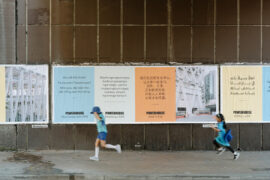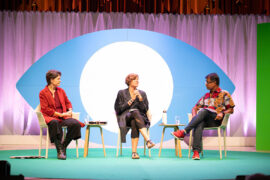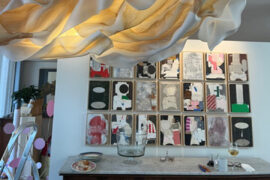Coordination Asia’s design for the Kids Museum of Glass 2.0 in Shanghai is a sophisticated scheme that appeals to both young and old.

November 10th, 2021
The newly opened Kids Museum of Glass 2.0 in Shanghai is a bright, modern public space that encourages independent learning and exploration. Designed by Coordination Asia, it occupies 2,320 square metres across two floors of a former glass-making workshop. The designers have taken advantage of its generous proportions to create an immersive environment where exhibits and installations are connected through a scavenger hunt that invites children to seek out clues within the space.

Environments designed for children can sometimes rely too heavily on garish colour or over-the-top themes, rendering them unappealing to adults (and perhaps not all that attractive to young ones). In the Kids Museum of Glass 2.0, Coordination Asia’s founder Tilman Thürmer and the project team deliver an outcome that instead draws on a sophisticated material palette and intelligent planning. “When it comes to designing a museum for children, the challenge lies in finding the balance between what they want and what their parents desire during a visit,” he says. “So we managed to create a satisfying learning experience that offers common ground for both sides.”

The building’s original timber ceiling and exposed brick walls have been preserved and like the rest of the interior finished in stark white. It’s a very contemporary interpretation of a ‘white cube’. But unlike traditional gallery spaces, this one is dynamic, with a myriad of textures and blackened steel platforms and staircases to punctuate it.

Customised glass brick walls break up the open plan yet still allow for an even distribution of natural light, while subtly patterned flooring and exposed ceiling beams and services bring an industrial accent to the scheme.

It makes for an effective and unexpectedly neutral backdrop into which the designers have inserted boldly coloured and intricately configured exhibits. Multimedia and digital content also plays an integral part in the design, with a mirror maze, sound installations and an interactive motion-tracking exhibit proving popular.

Animated lighting rods run throughout the space as do brightly coloured characters that pepper the walls. Such graphic elements add visual interest and a further sense of curiosity, without downplaying the sleekness of the overall design.

As Thürmer explains, “Sometimes we underestimate how much potential young children have to appreciate art and culture, as we often assume art is for grown-ups only. But in this project, we wanted to show that a museum for children can be cool, artistic and kid-friendly all at the same time.” This is a space that educates and entertains, providing children with memorable experiences that they can take away and reflect upon.



INDESIGN is on instagram
Follow @indesignlive
A searchable and comprehensive guide for specifying leading products and their suppliers
Keep up to date with the latest and greatest from our industry BFF's!

London-based design duo Raw Edges have joined forces with Established & Sons and Tongue & Groove to introduce Wall to Wall – a hand-stained, “living collection” that transforms parquet flooring into a canvas of colour, pattern, and possibility.

A longstanding partnership turns a historic city into a hub for emerging talent

A retrospective at Canberra Museum + Gallery honours Enrico Taglietti, shaping the exhibition through his own design principles.

Type designer Vincent Chan, who delivered a keynote speech with the Powerhouse as part of Sydney Design Week, tells us about the history and importance of this niche profession.
The internet never sleeps! Here's the stuff you might have missed

At the World Design Congress in London, a simple idea threaded through two dense days: design is not an island. It moves inside wider systems of economics, policy, finance and ecology.

Held in a private Melbourne residence, Fletcher Arts’ annual exhibition unites over 30 Australian artists and designers in a setting where art meets architecture.